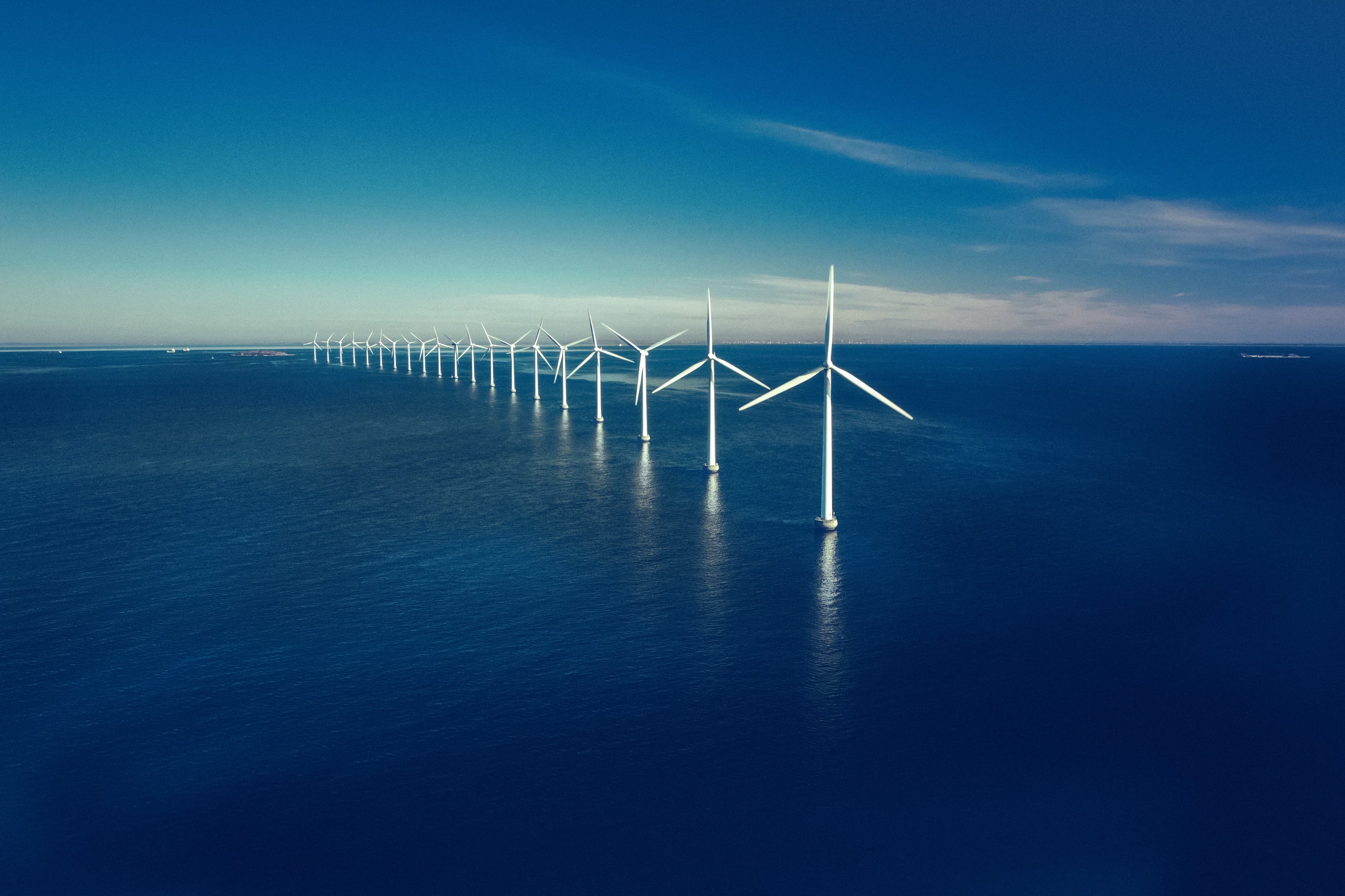
How Are Offshore Wind Farms Built?
Offshore wind farms are massive, complex projects that require years of planning, specialised equipment, and expert coordination. The process of building one involves several key phases: site selection, foundation installation, turbine construction, cable laying, grid connection, and ongoing operations and maintenance. With recent technological advances and an increased focus on sustainable energy, offshore wind is expanding into deeper waters and more challenging environments. Here's how it all comes together.
1. Planning & Site Selection
Before a single component is installed, extensive feasibility studies are carried out to assess wind speeds, seabed conditions, environmental impacts, and proximity to the electrical grid. Government approvals, permitting processes, and stakeholder consultations are also essential. The best sites balance strong, consistent wind with minimal disruption to shipping routes, fishing zones, and marine ecosystems.
2. Foundations
Most offshore wind farms use fixed-bottom foundations, which are installed directly onto the seabed in waters up to around 60 metres deep. The main types include:
-
Monopile foundations: A single large steel tube driven 25 to 40 metres into the seabed. These are the most common and are suitable for shallow to mid-depth waters (up to ~60 m).
-
Jacket or tripod structures: Lattice frameworks anchored by multiple piles, used in deeper waters (20–80 m).
-
Gravity base foundations: Concrete bases that sit on the seabed and are held in place by weight; typically used in very shallow waters.
-
Suction bucket jackets: Installed using a vacuum to embed into the seabed, reducing noise and environmental impact.
As turbines get larger, so do the foundations. Engineers must also protect against seabed erosion using scour protection like rock berms or synthetic mats.
3. Installation Vessels & Turbine Assembly
Wind Turbine Installation Vessels (WTIVs) are purpose-built ships equipped with cranes capable of lifting up to 3,000 tonnes at heights exceeding 150 metres. These vessels jack themselves out of the water for stability during installation and use dynamic positioning systems to hold their location.
Turbine components—tower sections, nacelles, and blades—are typically pre-assembled at ports and transported in batches. Onsite, crews install the tower onto the foundation, lift and secure the nacelle, and then attach each blade.
Some developers, like Orsted, are exploring quieter installation methods, such as soil jetting, which reduces underwater noise and impact on marine life.
4. Cables & Grid Connection
Offshore wind farms are interconnected using array cables, which link turbines to an offshore substation. Export cables then carry the power back to shore.
Cable landfall often uses Horizontal Directional Drilling (HDD) to minimise environmental disruption and avoid obstacles like roads and railways. Once ashore, electricity is routed to onshore substations and integrated into the national grid.
5. Floating Wind Turbines
For water depths beyond 60 metres, fixed foundations become uneconomical. Enter floating wind farms, which use buoyant platforms tethered to the seabed by mooring lines. Common designs include:
-
Spar buoys
-
Semi-submersibles
-
Tension-leg platforms
These systems are already operational in places like Norway (Hywind Tampen) and Scotland (Kincardine), enabling deployment in previously inaccessible deep waters.
6. Corrosion Protection
Offshore structures face constant exposure to saltwater, waves, and wind. To extend lifespan and ensure safety, engineers use a combination of:
-
Specialised coatings
-
Hot-dip galvanisation
-
Sacrificial anodes
-
Impressed current cathodic protection (ICCP)
7. Ports & Logistics
Dedicated offshore wind ports like Esbjerg in Denmark or Port of Tyne in the UK play a critical role in the supply chain. These hubs are used for pre-assembly, storage, and loading of massive turbine components onto installation vessels. With turbines growing in size and number, investment in port infrastructure is a key enabler for industry growth.
8. Operations & Maintenance (O&M)
Once operational, offshore turbines require regular inspections, troubleshooting, and maintenance. Access is usually by Crew Transfer Vessels (CTVs), helicopters, or Service Operation Vessels (SOVs) equipped with motion-compensated gangways.
For floating turbines, additional inspections are needed for mooring lines and dynamic cables. Safety training for offshore technicians is regulated by the Global Wind Organisation (GWO), which provides industry-standard certifications.
9. Costs & The Future
Offshore wind has become increasingly cost-competitive. As of 2019, the levelised cost of energy (LCOE) for fixed-bottom projects had dropped to ~$78/MWh, with projections of ~$53/MWh by 2035. Floating wind is currently more expensive but is following a similar cost-reduction path.
Technological innovations, better logistics, and standardised safety frameworks are helping scale the sector. With ambitious targets set by countries like the UK, US, and Japan, offshore wind will play a central role in global energy transition efforts.
Sources:
-
Orsted (www.orsted.com)
-
Global Wind Organisation (www.globalwindsafety.org)
-
Equinor (www.equinor.com)
-
International Energy Agency (www.iea.org)
-
WindEurope (www.windeurope.org)
-
U.S. Department of Energy (www.energy.gov)
-
Rystad Energy Reports
-
Hywind Tampen Project Documentation
-
Seagreen Offshore Wind Project
-
RenewableUK
-
DNV Offshore Structures Standards